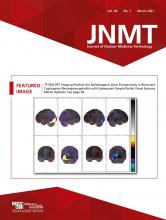Intramuscular injections are used to deliver medications deep into the muscle. Muscle tissue has a generous blood supply; thus, medications administered into muscle are rapidly absorbed into circulation. The flu vaccination, and more recently, the coronavirus disease 2019 (COVID-19) vaccination are examples of medications routinely administered by intramuscular injection into the deltoid muscle, the preferred intramuscular site (1,2).
The following protocol specifically addresses the intramuscular administration for the 2 COVID-19 vaccines manufactured by Moderna and Pfizer-BioNTech.
CLINICAL INDICATION
• Moderna COVID-19 vaccine: authorized for use under an Emergency Use Authorization for active immunization to prevent COVID-19 caused by severe acute respiratory syndrome coronavirus 2 (SARS-CoV-2) in individuals 18 y of age and older (3).
•Pfizer-BioNTech COVID-19 vaccine: authorized for use under an emergency use authorization for the prevention of COVID-19 caused by SARS-CoV-2 in individuals 16 y of age and older (4).
CONTRAINDICATIONS
• Severe allergic reaction (e.g., anaphylaxis) after a previous dose of a messenger RNA COVID-19 vaccine or any of its components, including polyethylene glycol or polysorbate (3,4).
PATIENT PREPARATION/EDUCATION
• Patient may eat and take medications as prescribed.
• Complete the Centers for Disease Control and Prevention’s Prevaccination Checklist for COVID-19 Vaccines to determine whether the patient has any of the following conditions (5):
1. Current fever or feeling sick.
2. History of an allergic reaction to any component found in the COVID-19 vaccine.
3. History of an allergic reaction to another vaccine or injectable medication.
4. History of a severe allergic reaction to food products, pets, environment, or oral medication.
5. Recent vaccine in the last 14 d.
6. Passive antibody therapy for the treatment of COVID-19.
7. Weakened immune system or currently taking immunosuppressive drugs or therapies.
8. Bleeding disorder.
9. Pregnancy or breastfeeding.
• Explain the injection procedure (preparation and location) and the need for postinjection monitoring for 15 min (patients with no known allergies) or 30 min (patients with known allergies) after vaccination. Note: after administration of the second dose of the vaccine, all patients should wait 30 min.
• Provide the patient with the emergency use authorization fact sheet for recipients and caregivers for the respective vaccine being administered (3,4).
PHARMACEUTICAL PREPARATION: PERFORMED IN A CLEAN AREA USING STRICT ASEPTIC TECHNIQUE AT ALL TIMES
• Perform appropriate hand hygiene.
• Bring vaccine to room temperature. Prepared vaccines must be stored between 2°C and 25°C (35°F and 77°F) and administered within 6 h of preparation.
1. Pfizer-BioNTech vaccine can be kept at room temperature for up to 2 h before reconstituting.
2. Moderna vaccine should be brought up to room temperature, which usually takes 1 h. The vaccine can stay at room temperature for up to 12 h as long as the vial has not been punctured.
• Needle gauge is site-specific; needle length is patient-specific (Table 1).
Centers for Disease Control and Prevention’s Vaccine Administration: Needle Gauge and Length—Deltoid Muscle (6)
Moderna Preparation (3)
• Verify expiration date on vaccine vial.
• Hold the vial upright and gently swirl the vaccine. Do not shake.
• Inspect the vial for discoloration; discard if discolored.
• Each 5-mL multidose vial contains 10 doses.
• Draw the recommended dose of 0.5 mL into a 3.0-mL syringe using a 25-g needle or smaller.
• Record the date and time that the vial was first punctured.
Pfizer-BioNTech Preparation (4)
• Verify expiration date on the vaccine vial and diluents.
• Invert the vial 10 times before dilution. Do not shake.
• Inspect the vial for discoloration; discard if discolored.
• Dilute the vial contents using 1.8 mL of 0.9% sodium chloride, USP. Do not use bacteriostatic 0.9% sodium chloride or any other diluent. Do not add more than 1.8 mL of diluent.
• Invert the vial 10 times. Do not shake.
• Each 1.8-mL multidose vial contains 5–6 doses.
• Draw the recommended adult dose of 0.3 mL using a dead-volume syringe or needle (limits dead space; allows full volume to be administered).
• Record the date and time the vaccine was mixed in the vial.
VACCINATION ADMINISTRATION
• Always follow the “Rights of Medication Administration” when administering any medication (7):
1. Right patient.
2. Right vaccine and diluent (if applicable).
3. Right time (product expiration time/date).
4. Right dosage.
5. Right route (including needle gauge, length, and correct technique).
6. Right reason.
7. Right documentation.
• Perform proper hand hygiene and then don protective equipment, including face covering and clean gloves.
• Identify the injection site (center of the deltoid muscle approximately 5 cm [2 in] below the acromion process on the lateral side of the shoulder above the axillary fold [armpit]).
• Clean the injection site with a sterile alcohol wipe using a circular motion from the center to a circle of 5–7.5 cm (2–3 in). Allow alcohol to dry.
• Stabilize the patient’s arm with the nondominant hand and insert the needle into the injection site at a 90° angle and administer the entire dose. Note: do not aspirate the syringe before or after administering the injection.
• While injecting, use one hand to stabilize the barrel of the syringe and the other hand to push the plunger to administer the vaccine.
• After needle removal at the same 90° angle, apply gentle pressure to the injection site with a clean gauze for several seconds, and then apply an adhesive bandage.
• Discharge the patient to the holding area for a 15- to 30-min observation period.
PRECAUTIONS
Anaphylaxis has been reported after COVID-19 vaccine administration. Sites administering vaccinations should have a written protocol outlining appropriate medical treatment, including required personnel, equipment, and medications in the event of an acute anaphylactic reaction (8).







